You’re going to be the most badass techie in the place with two additional 14-inch displays that fits right on your laptop.
Portable displays for laptops were just beginning to take off…and then the pandemic hit. Today, with two years to improve the design, manufacturers have moved on to portable dual displays like Riitek’s 14-inch “triple” portable monitor for laptops — and the concept, at least, is one of the most badass laptop accessories you can buy.
Essentially, the Riitek’s 14-inch “triple” display adds two extra 1080p 14-inch displays to your laptop, swivelling in from either side. If you’d like the appeal and risk of owning one of these triple displays summed up, here it is: If the display fits your laptop and if you have the right ports and if the display survives the trip, it’s a terrific addition to your overnight bag or backpack. Just make sure you check all the boxes.
It’s also worth noting that individual portable displays cost roughly INR12000/- or slightly less. A unified “triple” display combining two together may be worth the extra money. Browsing Amazon.in, you’ll see a few of these “triple” portable displays, which are essentially brackets or frameworks mounting a small portable display on either side of your laptop, creating a total of three screens. If you have more than one display at home, you’ll see the same benefit from portable displays on the road, too. These, of course, slide into your bag.
Here are the basic specs of the 13.3-inch triple display (model S16) as supplied by FOPO. Most of these specifications include some important fine print, which we’ll discuss as we go through the review.
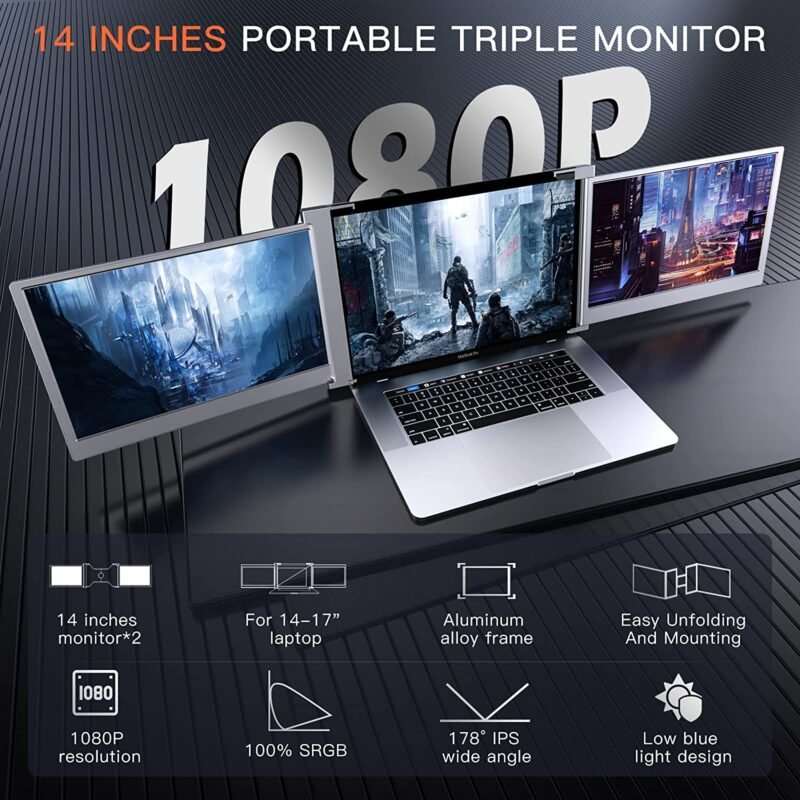
Riitek 14-inch Triple Portable Monitor features:
- 72% NTSC(100%sRGB) Wide Gamut: Master colour palette to restore colour fidelity – for immersive viewing and eye care against fatigue.
- FHD 1080P & HDR technology: Improved image quality, fine image quality, true colour reproduction HDR technology can make the image brighter and more real, and display more details in a clear plane.
- Foldable IPS Screen Display: The left side can be folded to 235°, while the right side can be folded to 180°, maximising the viewing angle and realising the concept of multiple people viewing in all directions.
- Retractable Screen Clamp: The retractable screen clamp is designed to fit laptops of different thicknesses and hold the device better.
- Patented Screen Mount: Provides support for the entire screen and can freely change the tilt angle without worrying about losing the device.
- Plug and Play: No driver installation is required. The input connectors are complete and do not need to be converted. All you need is a simple plug and you are ready to go.
Riitek’s “triple” monitor mounts the two displays on either side of your laptop’s screen, supporting them via a plastic framework or bracket that slides together using a rack-and-pinion gear, grasping your laptop on all four corners. Setting it up takes a minute or two of fiddling, since the framework essentially hangs off the top of your laptop’s screen, and is secured by a pair of tabs at the bottom two corners. Laptops with strong supporting hinges may be able to support the “triple” display by themselves. Otherwise, a thin pop-out kickstand can help support the contraption if you prefer to work with the display reclined.
Having used Riitek’s “triple” display for a few days, one can confirm that the concept is sound. If you’re the type of person who believes that their productivity increases by being able to see more screens (or screen space) at once, than this Riitek display fits the bill. True, Windows already supports options for single-screen work, including notifications and virtual desktops. However, the side screens work perfectly for email, chat, and other peripheral applications, leaving the main screen for your primary task.
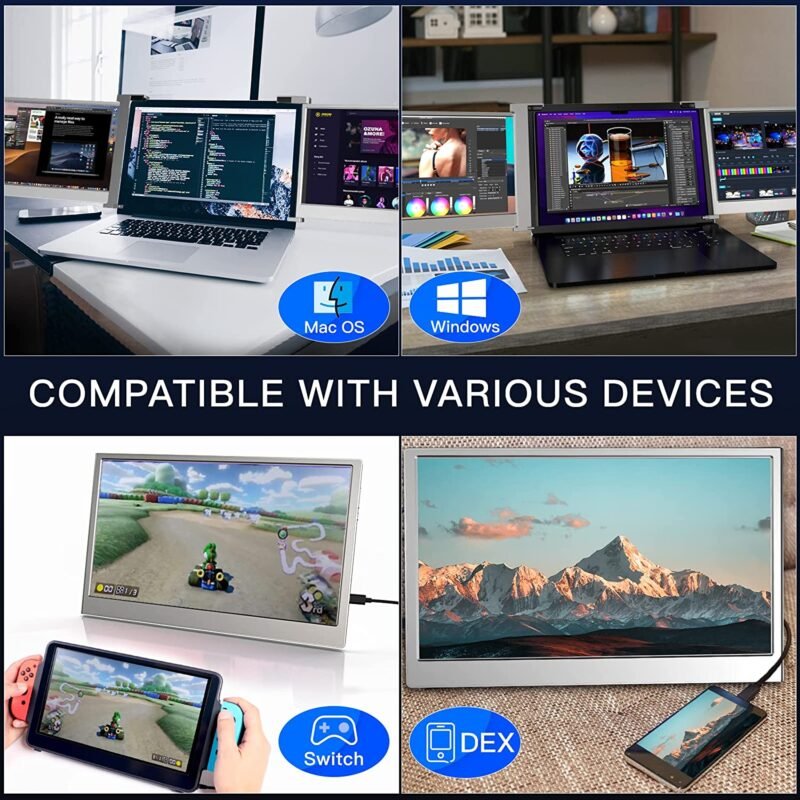
Each screen has a significant range of motion; the left screen swivels up to 235 degrees, while the right swivels 180 degrees. Because of the way the screens are oriented, that means that the left display can swivel all the way to the “back” of your laptop, transforming it into a supplementary display for presentations in a pinch.
Before considering Riitek’s 13-inch portable display, however, you should be aware of some significant caveats that won’t impact whether you should buy it, but whether you can actually use it. Unfortunately, we’d do you a disservice if we didn’t note these high up in the review.
Important considerations
When evaluating Riitek’s design, the most important measurement isn’t listed among the specifications: The dimensions of the laptop you already own, which will be encased by the “triple” laptop framework at all four corners. You’ll need to own a laptop that falls within the following sizes:
- Length: 11.4-16.4 in. (291-417mm)
- Height: more than 9 inches (230mm)
- Thickness: less than 0.28 in. (7mm)
Do not casually read this and think, everybody has a laptop that’s between 11 and 16 inches. Laptop displays are measured via the diagonal, and while a 13-inch Razer Book measures a sufficient 11.6 inches long, the screen ratio pushes it below the required nine inches high, at 7.2 inches. It won’t fit. Likewise, the thickness of laptops is typically measured while closed. In this case, it’s the thickness of the top half, in which the display is mounted, which matters. Thinking about mounting two displays alongside your Surface Pro 8? At 0.37 in., that tablet is too thick. Plan out your purchase, or risk sending it back.
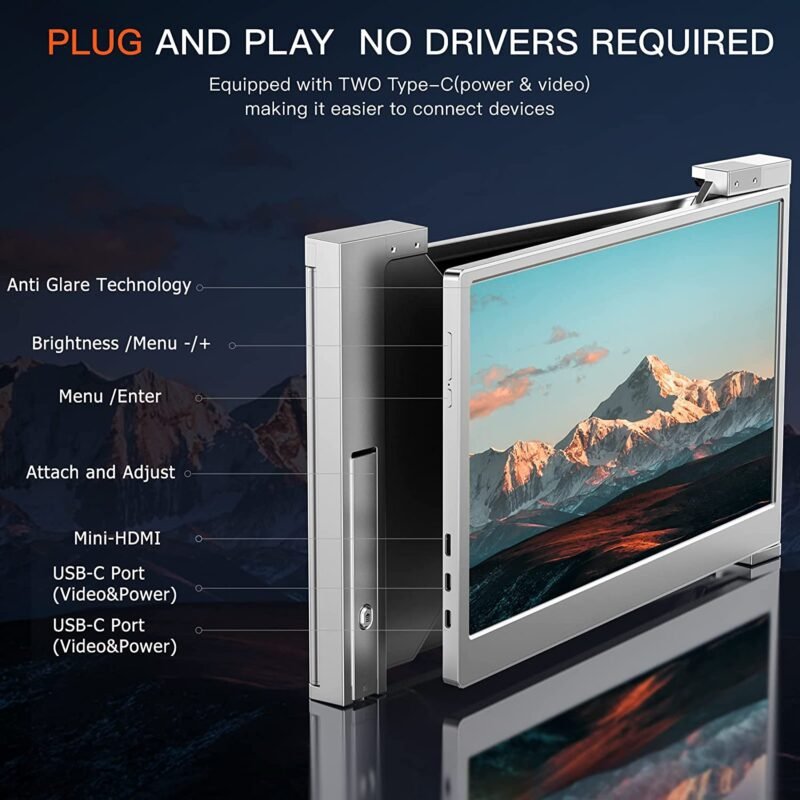
Riitek lists a number of supported laptops in its Amazon listing, which shouldn’t be taken as gospel. If you own a laptop that meets the specifications (Apple Macbook Air) seemed to work well, in my case) you should be okay. You’d be well served to consult your laptop’s manual or its online specifications before you buy, or pull out a ruler instead.
Secondly, you’ll also need to know the ports your laptop uses. This is a good-better-best situation. If you own a laptop with two USB-C Thunderbolt ports (either Thunderbolt 3 or Thunderbolt 4) you’ll be able to simply connect each port to the corresponding port on the display — the included pair of USB-C to USB-C cables will supply power as well as data, and that’s that.
If you lack those ports or your laptop has a single non-Thunderbolt USB-C port or a single HDMI port, you’ll have to use the two pairs of included cables (USB-C to USB-A, or HDMI to mini HDMI) to establish separate video and power connections to each display. You may need to connect the included 2-amp power adapter, too. Essentially, you can end up with cables snaking all over your desk if you own an older laptop.
One quirk of the design (which appears to be the same for competing triple-display manufacturers, too) is that Riitek didn’t take the time to adjust the button layout for the two displays. In other words, the buttons are arranged correctly on the left-hand display, and upside-down on the other.
The third and final caveat involves the design of the Riitek’s display, and how it’s packaged. Riitek apparently opted for a folding design, rather than thicker “sandwich” option. That means when you fold the display down, one screen is folded inward, protecting it, but the other is exposed to the outside world. We’d recommend buying a laptop screen or perhaps even packing the Riitek “triple” display inside of its box while traveling. That makes it a bit less portable, but will help protect it.
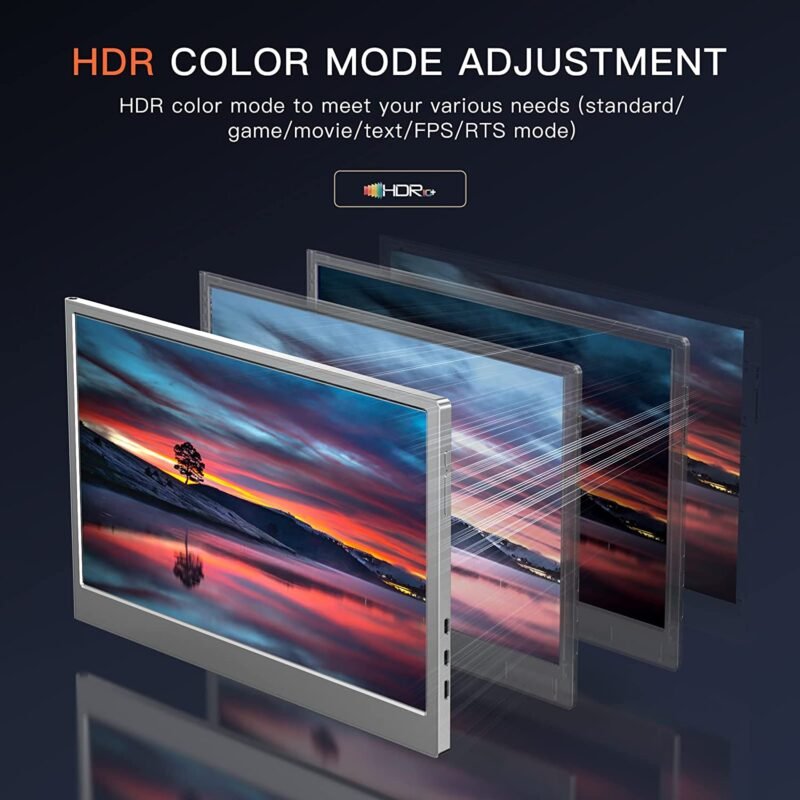
Performance: Don’t forget your laptop charger
Stepping through all of these caveats is exhausting. Fortunately, actually using the Riitek’s 13.3-inch portable monitor is much simpler.
The triple display does take a minute or two to set up, while ensuring each corner of the laptop’s screen finds its corresponding niche within the bracket. Don’t worry if your laptop places both ports on one side, as the USB-C cables are long enough to accommodate this.
The bracket appears to be constructed of plastic, striking a balance between weight and stability. There’s definitely some wiggle in the chassis, but each display’s hinge is strong enough to preserve the screen orientation. On the Studio, however, the kickstand didn’t always reach long enough to support the laptop, though Macbook’s build quality seemed over-engineered enough to support it. I do have concerns about the long-term impact of the bracket’s weight on a laptop’s screen glass, but I simply can’t test whether they’re unfounded or not.
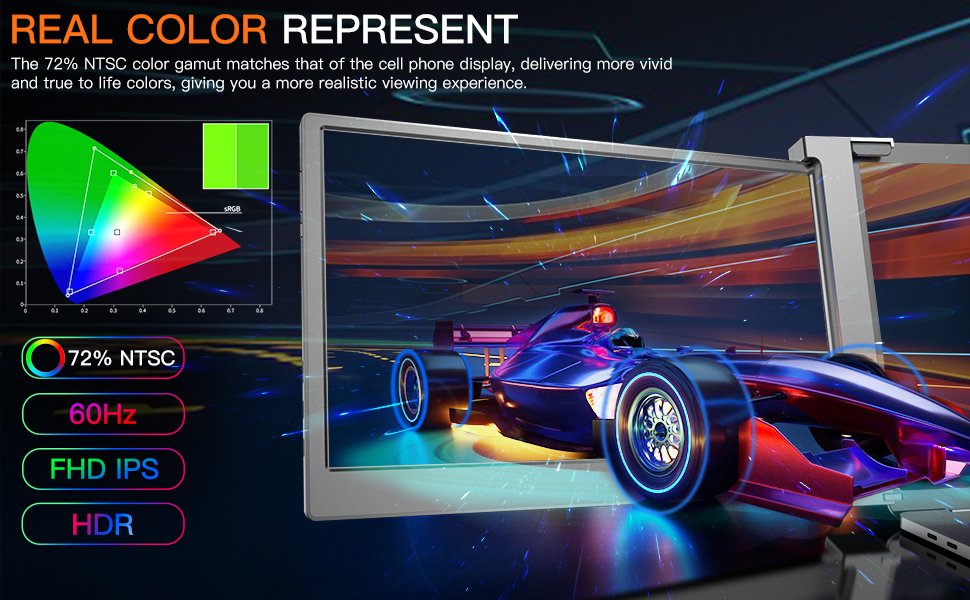
Don’t expect uniformity between the two displays. The range of luminance Riitek quotes should be a clue; the right display output a comfortable 311 nits at maximum brightness, while the left display put out a surprisingly high maximum of 426 nits, based on our colorimeter. Those are both more than enough for the 260 nits or so we deem suitable for everyday work.
Not surprisingly, however, the color gamut was nothing to write home about: a measured 72 percent of the sRGB gamut, and 55 percent or so of AdobeRGB. Each screen has its own hardware adjustments for brightness, contrast, colour temperature and more.
Naturally, the additional screens consume additional power, and powering them without an external power draw will have a profoundly negative impact on battery life. Using our standard battery rundown test (screen set to a fixed brightness level, playing back a single looped 4K movie with earbuds plugged in) the Macbook Laptop’s battery life dropped from nearly 13.5 hours (809 minutes) to 181 minutes, or about 3 hours. That’s an over 75 percent decrease.
Conclusion: A niche product, but a decent one
Riitek gives you plenty of reasons to buy its “triple” display.The exposed screen design, the fit.
On the other hand, it would seem perfectly reasonable to tote a lightweight, portable, long-lasting notebook from meeting to meeting, then connect the Riitek “triple” display (and the laptop charger!) for some productive late-night work.
So Riitek “triple’ display is, for us.







